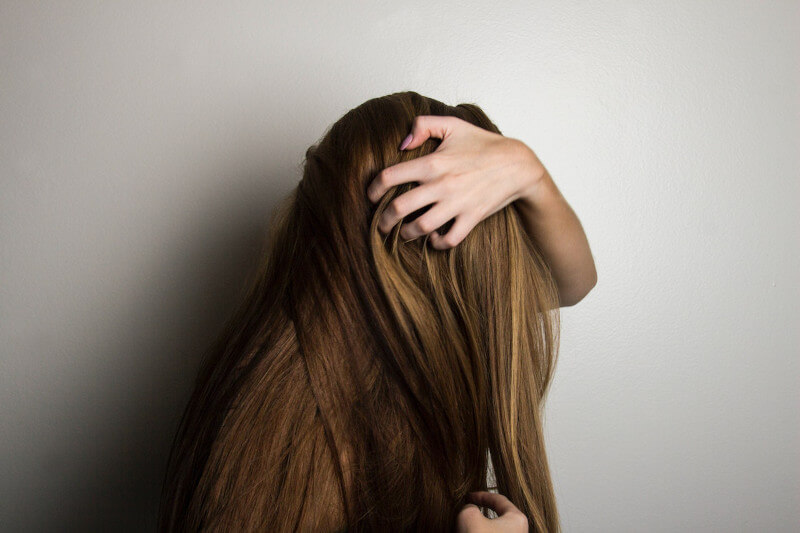A Comparison of Thick and Fine Hair Types

Your hair already stands out simply because the beauty of your hair can only be found in you and no one else. But if you wish to truly capitalize on the power underneath your one-of-a-kind natural curls, you must first gain a decent understanding of the variables that differentiate them from the rest, in addition to the online hair products that you can find on this site, which can lead to improved hair health. To do this, you will need to do some research. The first comparison to help you get started on your voyage to better haircare?
What is The Difference Between Thick Hair Compared to Thin Hair?
In most cases, the diameter of the hair and its cumulative density are used to evaluate its thickness. On the other hand, things aren’t always going to be that simple. When it comes to identifying your hair type, being aware of the distinguishing characteristics to look for can unleash a universe of possibilities that will allow your hair and your self-esteem to reach their full potential.
The Distinctive Characteristics of Thick and Fine Hair
The most obvious distinction between hair that is thin and that which is thick lies in the way that each independent strand of hair appears and feels to the touch. Even if you have spent a significant amount of time over the years examining and twirling your hair, it is still possible to be confused about the hair type you have if you do not have a clear idea of what you ought to be searching for. You will need to conduct an analysis utilizing the following two considerations to find out which classification your follicles belong to:
- Because it particularly quantifies the diameter of every independent strand of hair, the diameter method is frequently considered to be the most widely accepted way to determine the thickness of hair.
- The number of individual hair strands that are present on your scalp is referred to as your hair’s density. It is possible to have hair that is both thin and of high density. This indicates that their hair might have the appearance of being heavier than the hair of someone who has both fine hair and hair with a low density.
- Density should be taken into consideration as well, even though the diameter of your hair might appear to be the most straightforward way to differentiate between thick and fine hair.
The Basics of Thick Hair

There are several methods for figuring out where your hair falls on the spectral range, specifically through scalp and texture assessments.
How to Tell If Your Hair Is Thick
Generally, thicker hair has much more hair strands that have different textures. You could indeed evaluate the texture of your hair by making a few straightforward observations, including the following:
- Test for Texture – Hair with thicker strands tends to possess more texture than hair with finer strands. Rub a single strand of hair between your fingers to check for any coarseness. If you can see a discernible grain in your hair, the likelihood is that it is thick.
- Examine your Scalp – Look in the mirror and focus on the organic part of your hair. It’s a good sign that you have thick strands of hair if you can’t see much of your scalp through your hair. You can examine your scalp from several different perspectives by pulling your hair up in various directions or experimenting with different forms to part your hair.
You may have thick hair and thicker hair strands if you’ve noticed that the individual hairs on your head have a discernible texture, is relatively thick, and are packed closely together. The question that arises then is how exactly one should take care of thick hair.
How to Take Thick Care of Hair
Those who have thick hair often have locks that are full and fluffy, as well as a grainy texture and durable follicles. Hair that is either naturally textured or has been damaged by heat is more likely to become tangled and knotted. Because of this, you will want to take extra precautions to protect it from experiencing hair damage and split ends. Consider using products such as the following if you have thick hair and want to add some balance to its texture:
- Hydrating oils that are effective against frizz.
- Hydrating conditioner that will make your skin silky and regenerate it.
- Spray for protection against heat that also retains moisture
Because you have technology on your side that fortifies your hair, you can relax in the knowledge that your thick hair will feel strong, bright, and empowered to express itself.
What You Need to Know About Fine Hair

Imagine that you did not identify with a number of the observations that we made about people with thick hair earlier. If this is the case, this could be an indication that you have fine hair, or it’s also possible that your hair falls somewhere around the middle.
How to Tell If Your Hair Is Thin
The texture of thin or fine hair is usually described as being more fragile. In addition to that, while you are carrying out the subsequent tests, you will need to be on the lookout for the following distinguishing features:
- Examine the Texture – Thick hair will typically have a more abrasive feel to it than fine hair will. Put a single individual hair strand in between your fingers, and comb it through with the tips of your fingers. You probably have fine hair when you can hardly even feel the strands of hair when you run your fingers through them.
- Examine your head by looking at the natural part of your hair – When you examine your scalp, if you find that there is a significant amount of room between the individual hair follicles, then you most probably have fine hair. Even if your hair follicles are quite thick, it is still possible for you to have fine hair.
- The Ponytail Test – This requires placing your hair into a ponytail and then using a ruler to measure the outer diameter of the ponytail. This will tell you whether or not you have hair with a high density. A low density of hair is present if the length of the individual’s hair is less than 5cm. You have high-density hair if the diameter measures 10cm or more than that.
If you’ve noticed that your hair is getting thinner, you owe it to yourself to create a self-care routine specifically for it.
How to Treat and Maintain Fine Hair
Thin hair, if properly cared for and preserved, has the potential to be luscious, silky, and a malleable canvas for styling. You can acquire the skills necessary to style your thin hair in a variety of ways. Keep a look out for revitalizing products such as:
- Shampoo free of silicones is used to prevent roots from becoming greasy.
- Conditioner that adds volume for added fullness and lifts. Click here to find the Ultimate Weightless Conditioner for added volume.
If you give your fine hair love and attention, you can achieve healthy hair and a look that is certain to please.

